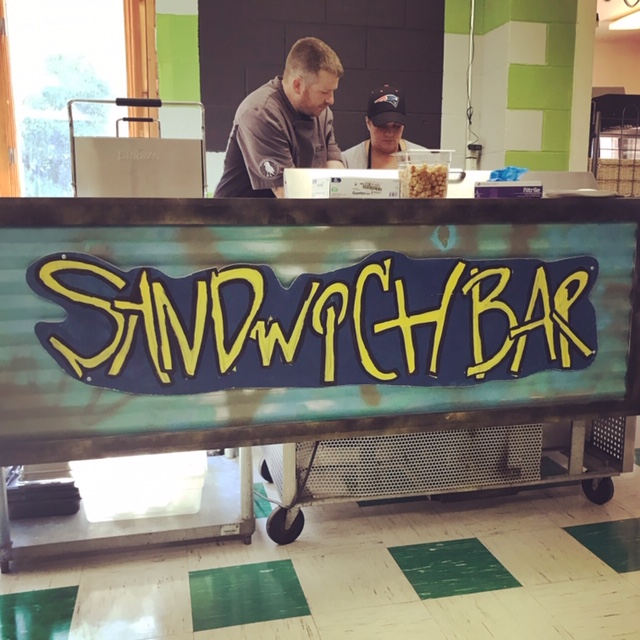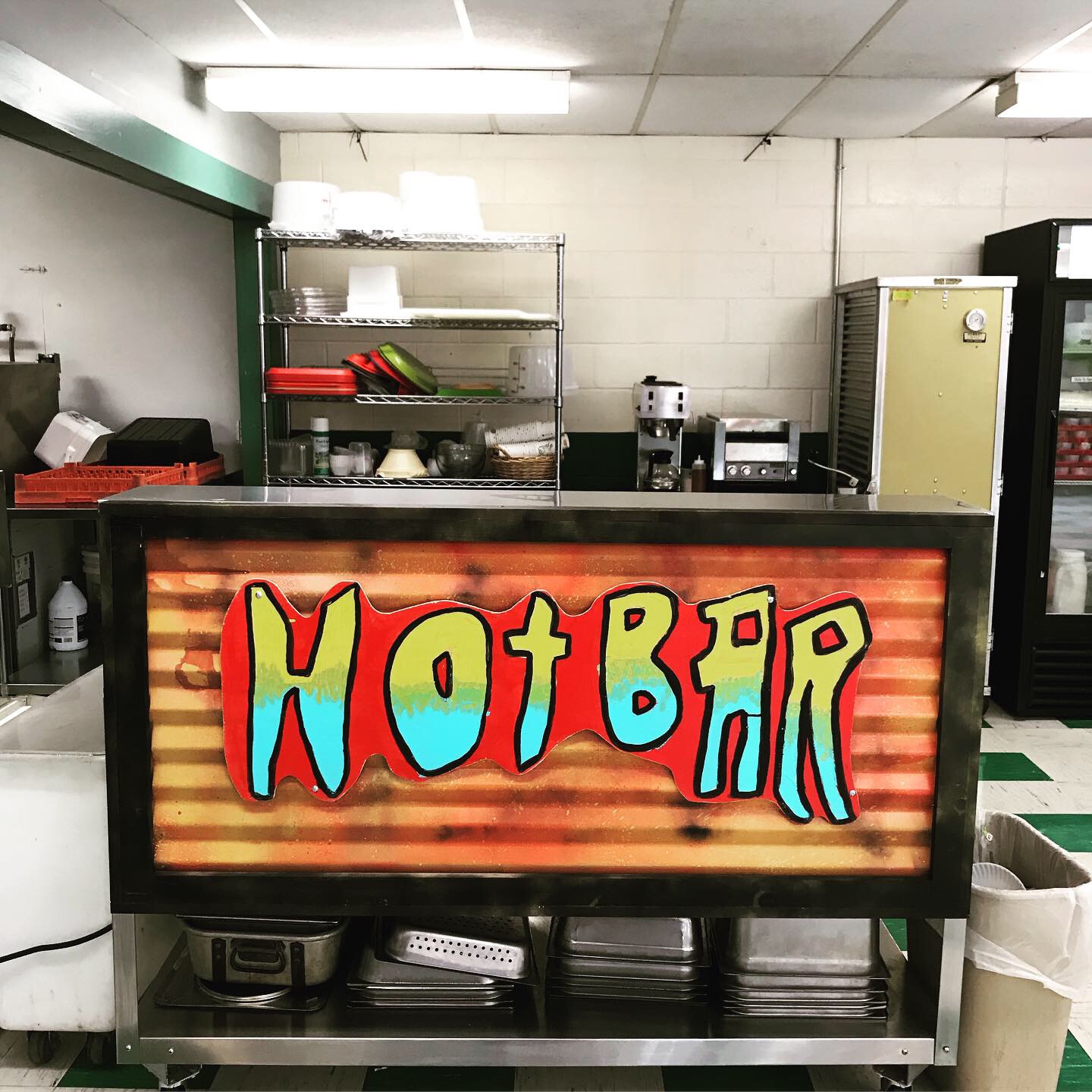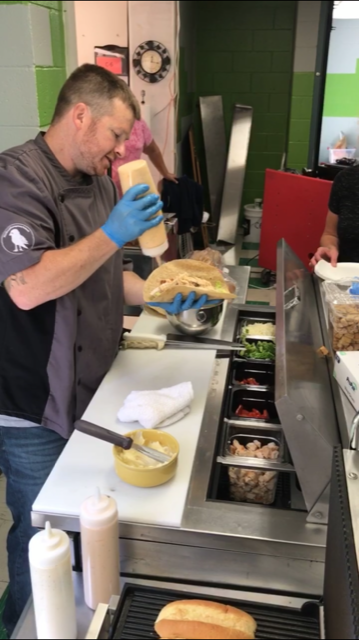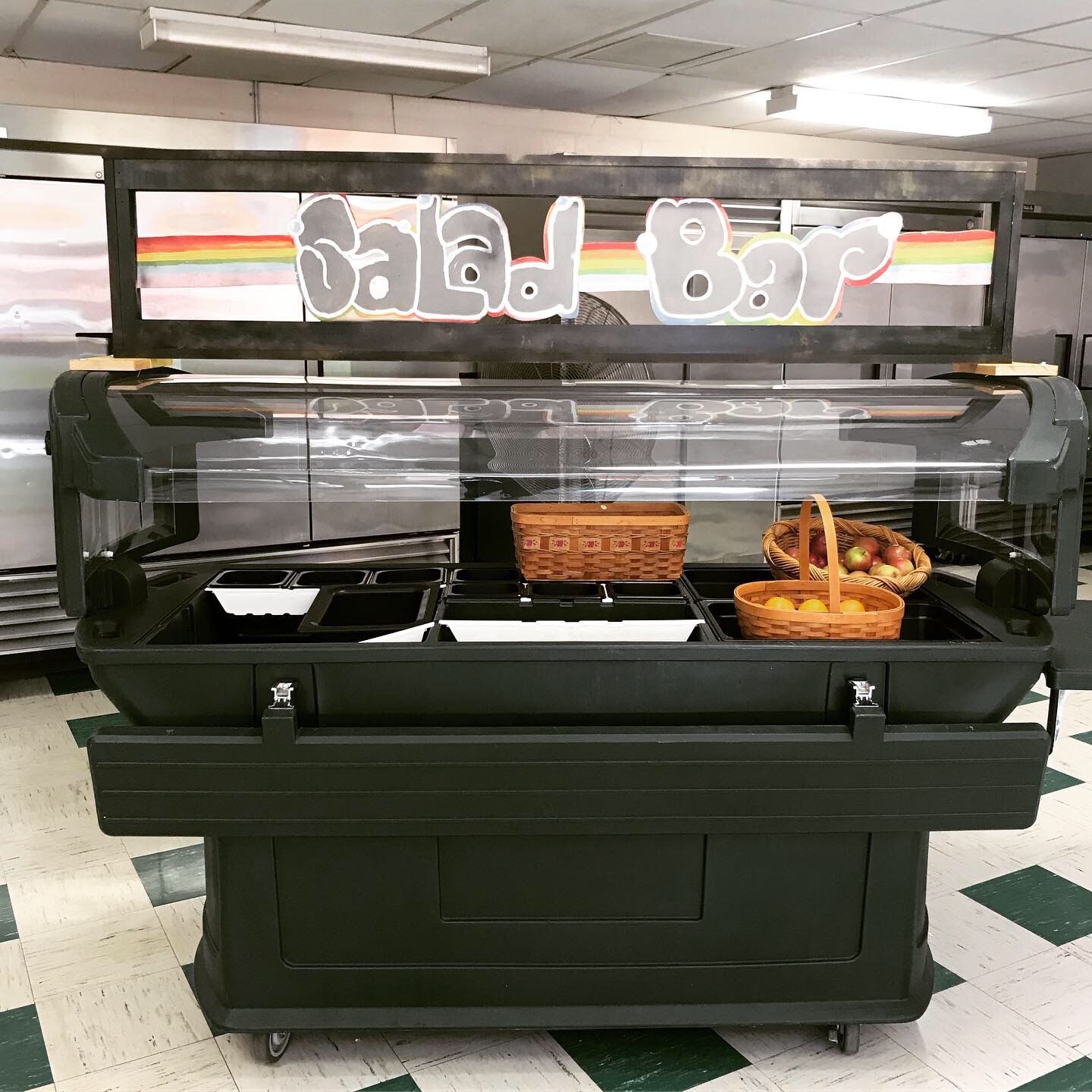Shortly after I started working at Food Connects last month, I saw “Cafeteria’s Unknown” pop-up on my list of projects. After a quick explanation, I was drawn right into the project. Eat a meal at each of the over 25 schools Food Connects works with? Not only could I share all the amazing things taking place in cafeterias with our community, but it was a great way for me to get to know all the schools I’m working with.
Breakfast after the Bell, salad bars, Universal Meals, new menu items, local ingredients—there’s a lot happening in our schools’ cafeterias. I’m excited to get the inside scoop on it all while also trying some delicious food.
-Conor
A student and I weigh our options at the new salad bar Harley built over the summer.
Visit any of the cafeterias in the Windham Northeast Supervisory Union and you’ll notice a lot of changes. Last year, Harley Sterling took over as the district’s Food Service Director and transitioned the district to independently operated cafeterias. It’s Harley’s goal to get more local food on the menu, better support his staff, and increase meal quality district-wide.
Earlier this month, we visited Central Elementary in Bellows Falls. Sheila, Food Connects’ Farm to School Program Coordinator, made the trip with me to share a meal and introduce me to Harley. While he was tied-up at another school, we snuck into the line in between 3rd and 2nd grade. We got our trays and headed for the entrees—chicken patties and roasted potatoes. At the salad bar, there was a wide selection of leafy greens, fresh veggies, and protein-packed sides.
With loaded trays, Sheila and I grabbed our seats in the middle of a table and immediately started talking food with our new 3rd grade friends. Owen and a few of his friends shared with us their favorite foods—there were many chicken patty fans. Owen was a strong proponent of Taco Day. Just as we were getting into the finer details of the salad bar, Harley arrived.
Luckily, Sheila remembered to snap a photo of my lunch before I dug in. It looks like I’ll need to work on my presentation during my next lunch photo shoot.
Harley spends most of his time in the Central Elementary cafeteria. As we ate, he explained the balance he’s trying to strike between filling the menu with new, healthier foods and making sure kids still eat lunch. My lunch tray stood as the perfect example: chicken patty may not be the healthiest protein option there is, but it’s a familiar item that most kids like. From there, students can start trying new items at their own pace. My salad was topped with fresh, crisp red peppers and tofu. The Asian rice salad was new to me and delicious as well. Harley and his team have been working hard to build the trust with their students so that participation stays high as they introduce new items in the cafeteria.
Harley and Erica, the School Nutrition Site Manager, holding up a banner Sheila and I dropped off.
And, it looks like it’s working! As we spoke, a girl next to us was eating her way through a small pile of peppers. Harley explained that many foods we may not think of as new or exotic are foreign to some students. “Tacos,” Harley said, “are one of those foods that have required a reintroduction for some students.” At the mention of his favorite lunch, Owen’s eyes lit up and he reminds me that tacos are his favorite.
Before we can dive back into our conversation, it’s time for a quick birthday celebration and then lunch is over—I forgot how short school lunch is!



















![Peabody Awards [CC BY 2.0 (https://creativecommons.org/licenses/by/2.0)]](https://images.squarespace-cdn.com/content/v1/5995f19ca803bb6608dcb3d6/1575918751814-3OGXWAYCNDJOHLCG6EZ6/Anthony_Bourdain_%2814284031394%29_%28cropped%29+-+CREDIT.jpg)









